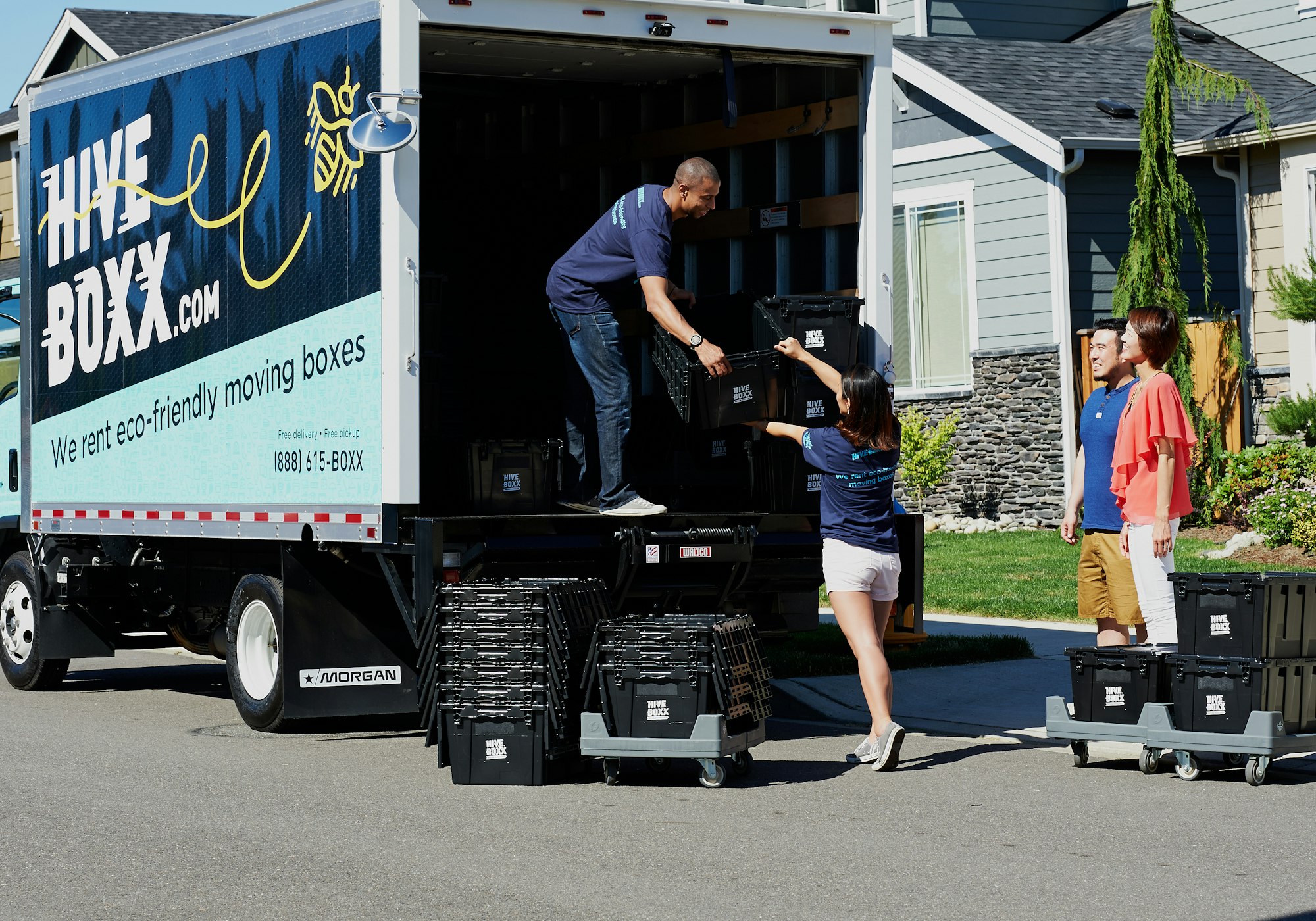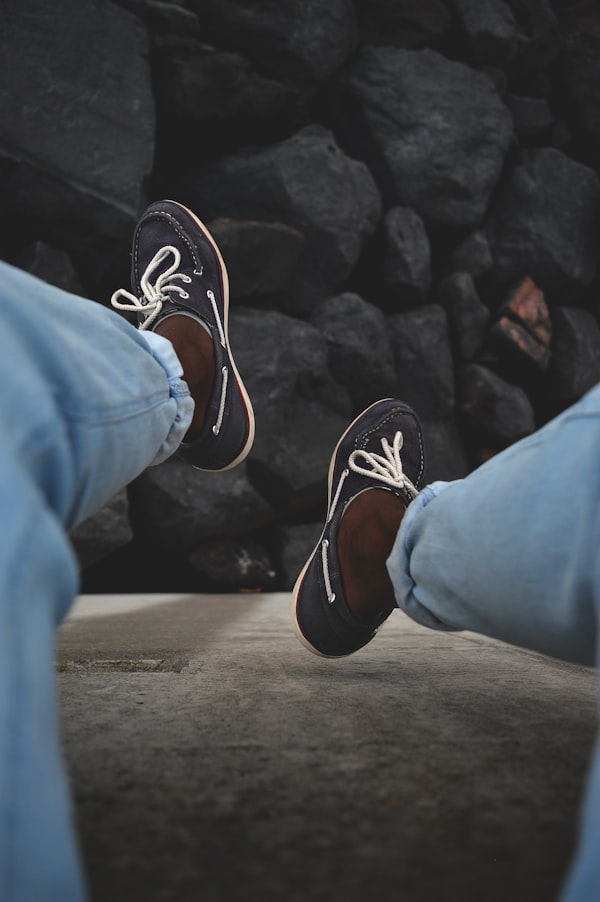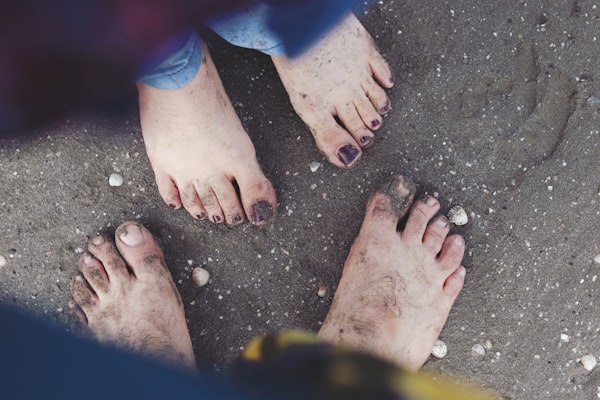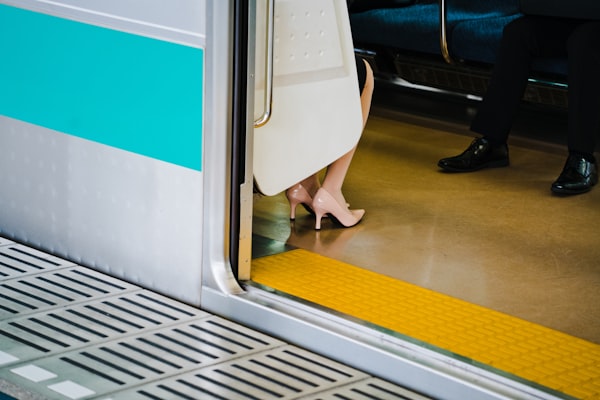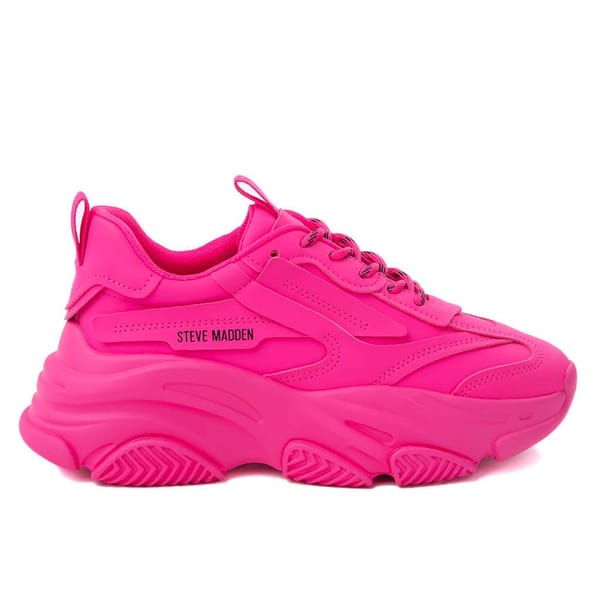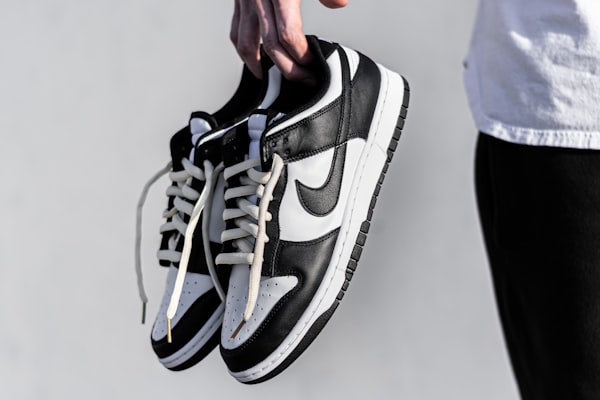Are you gearing up for the adventure of a lifetime, ready to take on a new chapter in your life? Well, your journey may not involve conquering runways, but it's just as crucial to ensure you pack your style essentials carefully. Attention, shoe enthusiasts and fashion lovers! We're about to unravel the secrets of keeping your beloved footwear in tip-top shape during a move.
Imagine this: you're about to start a new chapter, and your shoe collection is your most prized possession. From casual sneakers to elegant heels, they're the foundation of your style. But, as you embark on this exciting journey of relocation, you can't afford to overlook the safety of your cherished soles. After all, who wants to unpack a heap of scuffed or mismatched shoes in their new home?
We understand your desire to make a seamless transition for you and your beloved shoe collection. You want your footwear to emerge from their packing cocoon as pristine as they were when they entered. Picture yourself effortlessly stepping into your new life, clad in your favorite pairs, just as they were meant to be – flawless, fashionable, and ready for whatever comes your way.
It's time to lace up your metaphorical shoe-tying skills because we've got the ultimate guide on how to pack your shoes for moving. Whether you're a sneakerhead, a stiletto enthusiast, or somewhere in between, our expert tips and tricks will ensure your shoes perfectly harmonize with your exciting journey ahead. So, don't let your footwear journey be a misstep – let's make it a stylish stride!
Why Do My Shoes Deserve the Vip Treatment when I'm Moving?
Shoes aren't just practical necessities for our daily lives but powerful fashion statements and valuable investments. As you embark on your moving journey, it's crucial to recognize the significance of properly packing your beloved footwear.
Your shoe collection is a reflection of your style and taste. Each pair has been carefully curated, from sleek high heels to comfortable sneakers to complement various outfits and occasions. Your shoes aren't just accessories; they're an extension of your personality and an essential part of your wardrobe.
Moreover, many shoes are significant investments. Whether you've splurged on designer heels, invested in quality leather boots, or collected limited-edition sneakers, you've put your hard-earned money into building a collection that enhances your style and adds value to your overall fashion sense.
Now, consider the chaos that can ensue if your shoes aren't packed correctly during the move. Imagine scuffed leather, misshapen heels, or worse, unmatched pairs. Improperly packed shoes can lead to a range of issues.
The consequences of neglecting your shoe collection during a move can go beyond mere inconvenience. It can affect your style, comfort, and even the longevity of your shoes. Amid all the other moving tasks, don't underestimate the importance of ensuring your footwear arrives at your new home in excellent condition.
Step 1: Pre-Move Sorting and Decluttering
Before you embark on the packing process, it's essential to take a closer look at your shoe collection. Sorting and decluttering will make the packing process more manageable and help you streamline your footwear wardrobe. Here are some tips for evaluating your shoe collection before the big move and making informed decisions about what to keep, donate, or discard.
- Assess Your Collection: Begin by gathering all your shoes in one place. This allows you to see your entire collection and clearly understand what you're working with. Lay them out or place them in a well-lit area to easily inspect each pair.
- Consider Frequency of Use: Think about how often you wear each pair. Shoes collecting dust at the back of your closet for years may not be worth taking. Prioritize the shoes you wear regularly and those that hold sentimental value.
- Examine Wear and Tear: Inspect the condition of each pair. Are they in good shape, or are they showing signs of excessive wear and tear? If a pair is damaged beyond repair or uncomfortable, it might be time to say goodbye.
- Check for Size and Fit: Sometimes, our feet change over the years, and what used to be a comfortable fit may no longer be the case. If a pair of shoes no longer fit correctly, it's best to part ways with them to make room for footwear that does.
- Seasonal Considerations: Consider the climate of your new location. If you're moving to a place with a different climate, some of your current shoes may no longer be suitable. For example, heavy winter boots may not be necessary if you're relocating to a warm, tropical climate.
- Donate or Discard: Once you've assessed your collection, it's time to make decisions. Separate your shoes into three categories:
- Keep: These shoes you wear regularly, love, and are in good condition.
- Donate: Shoes still in decent condition but no longer fit your style or needs can find new life with someone else. Consider donating them to a local charity or shelter.
- Discard: Shoes beyond repair, excessively worn, or no longer usable should be discarded responsibly. Check if there are recycling programs in your area for old shoes.
By sorting and decluttering your shoe collection before your move, you'll not only lighten your load but also ensure that the shoes you pack are the ones that truly matter to you. It's a practical and mindful approach to packing, making your transition to a new home more efficient and enjoyable.
Step 2: Gather Your Packing Supplies
Now that you've sorted through your shoe collection and decided which pairs are coming with you on your move, it's time to gather the necessary packing supplies. Proper packing materials will help ensure that your shoes arrive at your new home in the same condition they left. Here's a list of essential shoe packing materials and a special tip on using clear boxes for easy identification.
- Sturdy Shoe Boxes: Start with sturdy cardboard shoe boxes. These are ideal for protecting individual pairs of shoes and preventing them from getting squished or damaged during the move.
- Bubble Wrap or Tissue Paper: Wrap delicate or fragile shoes in bubble wrap or tissue paper to provide an extra layer of protection. This is especially important for shoes with embellishments or delicate materials.
- Packing Paper or Newspaper: Use packing paper or newspaper to fill empty spaces within the shoe boxes. This will help prevent your shoes from shifting during transit.
- Packing Tape: Ensure you have plenty of packing tape to seal your shoe boxes securely. Reinforce the bottoms and tops of boxes to prevent them from coming apart.
- Marker or Labels: Have a marker or labels on hand for labeling your shoe boxes. Write a brief description of the shoes inside each box to make unpacking more manageable.
- Clear Plastic Shoe Boxes: Consider using clear plastic shoe boxes for some of your footwear. Clear boxes offer several benefits:
- Easy Identification: You can quickly see the contents with clear boxes without opening each one. This is especially handy if you have an extensive shoe collection.
- Dust Protection: Clear boxes keep your shoes dust-free during the move, which means less cleaning when you arrive at your new home.
- Durability: Plastic shoe boxes are sturdy and can be reused for shoe storage in your new space.
- Large Moving Boxes: For boots, oversized sneakers, or other bulky footwear, you may need larger moving boxes. Ensure these boxes are well-padded with packing paper or bubble wrap to prevent damage.
- Shoe Bags or Pillowcases: For shoes you're not using boxes for, consider using shoe bags or pillowcases to keep them protected and dust-free.
Gathering these essential packing supplies will prepare you to pack your shoes securely and efficiently. Clear plastic shoe boxes can be particularly helpful in simplifying the packing and unpacking process while ensuring your shoes remain in excellent condition.
Step 3: Packing Different Types of Shoes
When it comes to packing shoes for a move, not all pairs are created equal. Different types of shoes require different handling to ensure they arrive at your new home in the best possible condition. Let's dive into specific tips and techniques for packing various shoe types.
1. Sneakers and Athletic Shoes
Start by tying the laces together to keep each pair intact. Then, wrap them individually in tissue paper or bubble wrap to prevent scuffs and maintain their shape.
Place sneakers in shoeboxes; if they don't have their original boxes, use sturdy cardboard boxes. Fill any extra space with packing paper to prevent movement.
2. High Heels and Dress Shoes
To protect delicate heels and uppers, wrap each shoe in bubble wrap or tissue paper. You can also use old socks to cushion and prevent friction.
High heels and dress shoes should be packed individually in shoeboxes or clear plastic boxes to prevent scuffing and maintain their elegant shape.
3. Boots and Ankle Shoes
To maintain the shape of your boots, stuff them with crumpled newspaper or boot shapers. If your boots have delicate materials or embellishments, wrap them in tissue paper before packing.
Use tall moving boxes for boots, placing them upright to save space. Secure the boxes to prevent tipping during the move.
4. Sandals and Flip-Flops
You can bundle pairs together using rubber bands or zip ties for lightweight and open-toed shoes. This will help keep them organized and prevent separation.
Place your sandals and flip-flops in shoeboxes or clear plastic containers. If you have numerous pairs, consider nesting them to save space.
Special Considerations
Some pairs may require extra care and attention due to their fragility, value, or unique characteristics.
Fragile or Valuable Shoes
- Individual Wrapping: For delicate or valuable shoes, such as designer heels or vintage collectibles, wrap each shoe individually in a soft cloth or tissue paper. This provides an extra layer of protection against scuffs and scratches.
- Double Boxing: Consider double boxing these shoes. Place the individually wrapped shoes in a shoebox or clear plastic container and then put that box inside a larger, sturdy cardboard box with ample cushioning material.
- Hand-Carry Option: If you have extremely valuable or fragile shoes, consider hand-carrying them to your new home, especially if they are irreplaceable or sentimental.
Protecting Shoe Soles
- Cardboard Inserts: To prevent shoe soles from coming into contact with each other or other items during the move, place cardboard inserts or pieces of cardboard between the soles.
- Sole Protectors: Invest in sole protectors, which are adhesive pads designed to shield the soles of your shoes. These can be especially useful for expensive or delicate shoe soles.
- Plastic Wrap: Wrap the soles of your shoes in plastic wrap or plastic bags. This will provide an additional layer of protection against dirt and scuffs.
Maintaining Shoe Shape
- Boot Shapers: If you're packing boots, use boot shapers or stuff them with crumpled newspaper to maintain their shape and prevent creasing.
- Shoe Trees: Consider using shoe trees for dress shoes and heels. These devices help retain shoes' shape and absorb moisture, keeping them in optimal condition.
- Adjustable Boxes: Invest in clear plastic shoeboxes with adjustable dividers. These allow you to customize the space inside the box, ensuring each shoe retains its shape.
Paying particular attention to the needs of shoes, protecting shoe soles, and maintaining shoe shape will ensure that even your most precious footwear arrives at your new destination unscathed. These extra precautions are well worth the effort to preserve your unique and valuable shoe collection.
Step 4: Organizing and Labeling
Now that your shoes are securely packed organizing them within their boxes and labeling everything properly is crucial. This step will make your move more efficient and simplify the unpacking process. Here's guidance on how to organize your shoes within boxes and how to label them effectively:
Organizing Shoes Within Boxes
- Keep Similar Styles Together: Group shoes by style or purpose. For example, place all your sneakers in one box, dress shoes in another, etc. This makes it easier to locate specific pairs when unpacking.
- Use Tissue Paper or Bubble Wrap: If you're stacking multiple shoes in a single box, place a layer of tissue paper or bubble wrap between each pair to prevent scuffs and keep them from rubbing against each other.
- Stack with Care: When stacking shoes in boxes, put the heaviest pairs at the bottom and lighter ones on top. This prevents damage to delicate shoes and helps maintain their shape.
Labeling Boxes for Easy Unpacking
- Be Specific: On the outside of each box, use a marker or label to write a brief description of the shoes inside. Include details like "Men's Dress Shoes" or "Women's Boots."
- Color-Coding: If you're dealing with an extensive shoe collection or multiple family members' shoes, consider color-coding the boxes with different markers or colored labels for easy identification.
- Prioritize Essentials: If you need specific shoes immediately upon arrival, mark those boxes as "Priority" or "Open First." This way, you won't have to dig through all your boxes to find what you need for your first day in your new home.
- Keep an Inventory: Create a master list or spreadsheet that details which pairs are in each box. This can be a lifesaver if you're looking for a specific pair but don't want to open every box to find it.
Maximizing Space Efficiency
- Stack and Nest Shoe Boxes: When packing shoeboxes, stack them vertically to save floor space inside your moving containers. This maximizes space and makes it easier to access specific pairs without unstacking everything. If you're using clear plastic shoeboxes, consider nesting them inside one another when empty to save space. Then, when it's time to pack, simply separate and fill each box.
- Utilize Empty Shoe Space: Make the most of the space inside your shoes by filling them with small, soft items like socks, belts, or accessories. This not only conserves space but also helps maintain the shape of your footwear. For smaller, flexible shoes like flip-flops or ballet flats, you can fold them to maximize space inside boxes or containers.
- Compact Packing Techniques: Use the roll-and-tuck method to run low on shoeboxes or containers. Place one shoe inside the other, and roll them up in a soft garment like a t-shirt or scarf. For sandals, flip-flops, or any lightweight shoes, consider placing them in Ziploc bags and sealing them. This not only saves space but also keeps them clean and together.
- Load Shoes Strategically: Place shoe boxes on the bottom layer when loading your moving vehicle, distributing the weight evenly. This helps maintain the stability of your belongings during transit. If you need to access your shoes during the move (e.g., for a wardrobe change), position them near the top of your packed items to avoid unpacking everything.
By following these packing tips, you can make the most of your moving containers and ensure that your shoe collection is packed securely while saving space for other essential items. It's all about balancing space optimization and maintaining the condition of your beloved footwear during the move.
Step 5: Loading and Transporting
As you prepare to move, ensure that your carefully packed shoe collection arrives in the same pristine condition at your new home. Proper loading and transportation are crucial to achieving this. Here are some recommendations for positioning shoe boxes within moving containers or vehicles and ensuring adequate ventilation to prevent odors:
Positioning Shoe Boxes
- Stable Base: Place your shoe boxes on the bottom of your moving containers or vehicles. This creates a stable foundation for stacking other items on top.
- Weight Distribution: Distribute the weight evenly within your moving containers. Avoid overloading a single box with shoes, as it could become too heavy and damage the shoes at the bottom. Balance shoe boxes with other items to maintain stability.
- Vertical Stacking: If you need to stack boxes on top of each other vertically to prevent crushing or damaging the contents. Ensure that boxes are secure and won't shift during transit.
Proper Ventilation
- Leave Space for Airflow: To prevent odors from developing inside closed shoeboxes, leave a small gap for airflow by not sealing them completely. This will allow for some ventilation and help minimize any potential smells.
- Use Air Fresheners: Place a few air fresheners or odor-absorbing products (like activated charcoal) inside your moving containers or vehicle to keep the air fresh and combat any potential shoe odors.
- Wrap Fragrant Items: If you have shoes with strong scents, like running shoes, wrap them individually in plastic bags or keep them separate from other footwear to prevent the odor from spreading.
Protect from Extreme Conditions
- Temperature Consideration: Be mindful of extreme temperature conditions during the move. Shoes, especially those made of leather or other sensitive materials, can be affected by extreme heat or cold. Avoid storing your shoes in areas of your vehicle that might be exposed to extreme temperatures.
- Moisture Control: If you're moving during rainy or humid weather, take precautions to protect your shoes from moisture. Use moisture-absorbing products or silica gel packs in the containers to help keep your footwear dry.
By carefully positioning your shoe boxes, ensuring proper ventilation, and protecting your shoes from extreme conditions, you'll help ensure that your beloved footwear arrives at your new home in excellent condition.
Step 6: Unpacking and Reorganizing
Congratulations on successfully moving your shoe collection to your new home! It's time to quickly unpack and reorganize your footwear to access the perfect pair. Here are some tips for a smooth unpacking process and setting up an organized shoe storage system in your new space:
Unpacking Your Shoes
- Prioritize Essentials: Start unpacking the boxes containing shoes you'll need immediately. These might include everyday shoes, work shoes, or those for special occasions.
- Check for Damage: As you unpack, inspect each pair for any damage that may have occurred during the move. If you notice any issues, address them promptly to prevent further damage.
- Use Labels: Refer to the labels or descriptions on the boxes to identify which pairs are inside. This will help you locate specific shoes quickly.
Setting Up an Organized Shoe Storage System
- Designate a Shoe Area: Choose a dedicated area in your new home for your shoe collection. This could be a closet, a hallway nook, or a built-in shelving unit.
- Shoe Racks or Shelves: Invest in shoe racks, shelves, or cubbies to keep your shoes organized and easily accessible. Consider adjustable shelving units to accommodate various shoe sizes.
- Clear Bins or Boxes: If you used clear plastic shoeboxes for some of your shoes during the move, continue to use them for easy identification and protection from dust.
- Boot Storage: Use boot shapers or hangers to maintain the shape of your boots. Store them upright or use boot storage solutions specifically designed for tall boots.
- Rotate Seasonally: Organize your shoes seasonally, keeping out-of-season footwear tucked away and easily accessible when needed. This frees up space for your current-season shoes.
- Label or Categorize: Consider labeling shelves or bins by category or occasion, such as "Work Shoes," "Casual," "Formal," or "Athletic," to help you quickly locate the perfect pair.
- Regular Maintenance: Make a habit of regularly cleaning and maintaining your shoes. Wipe off dirt and dust, polish leather shoes, and promptly address any scuffs or stains to keep your collection in top shape.


Following these tips will ensure a smooth unpacking process and set up an organized shoe storage system in your new space. Your shoes will be well-preserved and easily accessible, allowing you to put your best foot forward in your new home.
On a Final Note
In the grand scheme of moving, shoe packing might seem like a small detail, but we've shown you how it can make a world of difference. So, as you prepare to embark on your next adventure, remember this: your shoes are more than just footwear; they're an extension of your style and personality.
With our tips and tricks, you've mastered the art of shoe packing, ensuring that your beloved pairs arrive at your new doorstep ready to strut their stuff. No more mismatched or scuffed shoes – just an ensemble of well-preserved, fashionable footwear.
As you settle into your new space, one thing's for sure: you'll be stepping into this new chapter with confidence, knowing that your shoe game is as strong as ever. So, keep striding forward, and let your shoes do the talking – they've got a lot to say! Happy moving and happy shoe styling!
Related Articles











